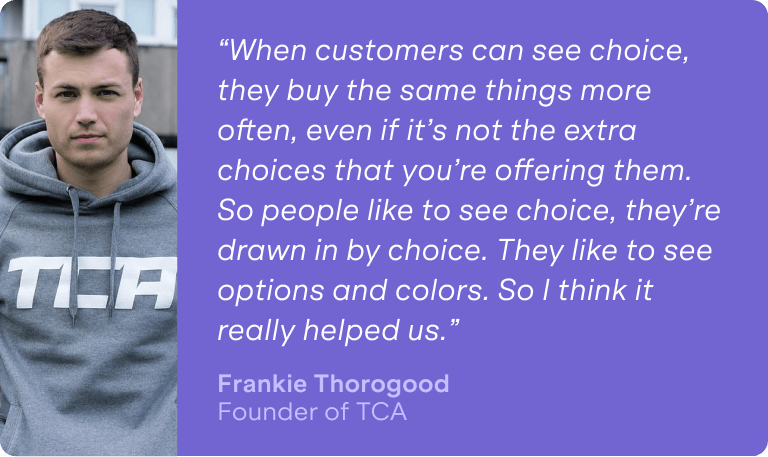4 Tips For Building a Scalable Sourcing Strategy
When you’re first starting out, sourcing might seem straightforward. But as your order numbers and ASINs grow, you’ll find that having no rhyme or reason in your sourcing will lead to problems: shipping delays, out-of-stocks, and high return levels.
Finding winning products at great prices to achieve that all-important product-market fit is of course at the heart of sourcing success. But for long-term efficiency and growth, you need to take into account the full range of factors that affect your contribution margin. That’s not just the per unit cost, but logistics (alongside other variable costs like some labor and advertising) too.
It’s important to build a sourcing strategy that doesn’t just support you right now – it also acts as a foundation for your future logistics plans, in line with your wider FBA business strategy. Here are four tips on building a sourcing strategy that will scale as your business grows.
1. Build strong manufacturer and agent relationships
Should you go straight to the manufacturer or use an agency?
A sourcing agent can handle all of your supplier relationships and negotiations. Especially for new sellers that haven’t built a team yet, having just one point of contact – rather than speaking to dozens of factories – can be beneficial. It saves a lot of time on identifying sources, reaching out to factories, and handling communications.
A good sourcing agent, who has experience in your sector and the location you’re sourcing from, can also leverage their expertise and supplier relationships. Once you’ve told them your target price and quality, they can advise you on the best manufacturers and then work on negotiating down to the best price. This is especially important if you don’t speak the language of the country you’re sourcing from.
Shirley Katsumata can testify to this. She is the founder of Bliss n’ Baby, an Amazon store selling unique baby products that was acquired by SellerX in 2021. Shirley was asked the secret behind her >30% net margins.
On the same note, sourcing agents can be critical in finding great manufacturers that aren’t on popular international sourcing sites, helping you to find those all-important competitive products.
However, if you stop working with your agent, you are likely to lose your manufacturer relationships too, which can lead to detrimental sourcing issues. This can happen for a variety of reasons: your agent puts their prices up, you’re unhappy with their performance, or they could even close down.
That’s not to say that sourcing agents aren’t an option at scale – they bring valuable agility and an ability to pivot. You can manage the associated risks by choosing reputable suppliers with a long track record and putting in place a solid contract, with a service-level agreement (SLA) and lock-in sourcing fees.
But even if you do lock-in those fees, you will still be paying them – and this affects your contribution margin.
If you’re prioritizing cost, transitioning to direct supplier relationships can be valuable, bringing on employees to help if necessary. Although working directly with manufacturers requires more work and communication on your part, you can ensure you’re protecting your margins by getting the lowest costs and protecting your stock by building those supplier relationships.
“For everyday consumer products in categories with competitive pricing and quality, we need to find high-quality products but also protect our margins as much as possible. One of the best ways to do that is by bringing the logistics costs down with a strong sourcing, QA, and delivery team that can handle everything in-house.” – Doris Chui, Sourcing and Purchasing Lead at SellerX
2. Adapt with Incoterms
The shipping delays that started in 2020 have caused many sellers to pivot their sourcing strategies, as well as their wider business strategies, including using Big Data to manage PPC spend in the wake of supply chain disruptions.
Sellers need to think creatively about how to manage stock. For example, some sellers have moved shipments from the popular Free On Board (FOB) Incoterm to Free Carrier (FCA) using third-party logistics. With FOB, each supplier transports goods to a port and manages export. With FCA, you can get each of your suppliers to send stock to an inbound warehouse, then ship batches of products out on demand.
At scale, having all your products stocked in one warehouse, ready to be shipped out together, can dramatically decrease out-of-stock rates. You also have more confidence to secure a regular shipment contract with a freight forwarder, guaranteeing that finite container space for your products on a weekly, or even monthly, basis.
3. Consolidate your vendors
Logistics is just one of the costs that affects your contribution margin. The good news is that, as you grow, you can reduce the percentage you’re spending on logistics and shipping by making things more efficient.
Building a full product line, with lots of different options and variations, can drive long-term growth. Frankie Thorogood, Founder of TCA, had over 100 SKUs in his store.
However, when you have lots of products coming in from lots of different vendors, your costs are going to rocket. Brands with a high ASIN count can really benefit from vendor consolidation: the process of reducing the number of suppliers you’re working with and getting more products from each remaining vendor.
Not only can you minimize your shipping costs – by shipping out lots of goods in one shipment, rather than small order numbers in several different shipments – you also have higher bargaining power in your supplier relationships. With higher order numbers per agent or manufacturer, you’re likely to be able to renegotiate a better price per product. And with fewer suppliers to order from, you can free up your focus, time, and resources.
One word of warning though. When you rely on a small number of suppliers for a large product range, you have to manage a higher level of risk. When a large number of your products rely on your relationship with one supplier, you could have store-wide out-of-stocks if that supplier goes out of business or decides to stop working with you. Your supplier could also take advantage of their own bargaining power and increase their prices. If you haven’t got another supplier to turn to and orders are still rolling in, you could be forced to stay with a supplier that’s hurting your bottom-line. Again, the key to minimizing this risk is securing contracts with reputable suppliers that lock-in prices and confirm an SLA.
In order to take advantage of the benefits of vendor consolidation, there’s some analytical groundwork to do. Start by defining some key metrics, based on what’s important for your business. For example, if your shipments are time-critical, then one of your KPIs should be the percentage of on-time deliveries. You can also rank suppliers on customer rating and their level of cooperation.
Once you’ve assessed how each supplier tracks against each KPI, you can identify the best-performers, who you should prioritize for vendor consolidation.
4. Think about your wider infrastructure
When you first start an Amazon business, inspecting some samples can be enough to get going.
However, as you grow – and the number of customers using your products grows – the need for quality, production, and delivery performance management will grow too. It’s helpful to be close to your factories in order to manage product quality, pricing, and delivery.
Where are you headquartered? Do you plan to open offices in other countries? Are these the same countries you’re sourcing from?
Forward-thinking Amazon sellers should be asking these questions from the start to drive decisions about where to source from – rather than realizing they need to set up offices in the sourcing country once production performance is faltering.
That said, in the Amazon space, it’s not 100% necessary to have an on-the-ground presence, especially when you don’t need to meet strenuous quality requirements and logistics aren’t complex. It’s all about analyzing your business model and size in order to find the right balance between product price, operation cost, product quality, and delivery performance.
Shirley Katsumata talks about how she outsourced all factory inspections because she was a full-time mom. Outsourcing inspection comes with fewer downsides than doing the same with sourcing – if one inspection agency closes down, you can still maintain your relationship with the supplier and just find another inspector. However, to stay agile and adaptable, it’s important to set up a trusted and experienced network of partner inspectors.
Brought to you by the team at SellerX
These strategies are brought to you by the sourcing team at SellerX. They draw on their experience sourcing best-selling products for over 40 global eCommerce brands.
Get insider Amazon advertising insights with SellerX’s free download: 5 PPC Strategies for 2022
Get a Competitive Edge - Source Unique Products from India IN INDIA!
India offers a plethora of differentiated products to build sustainable brands. We would love to help you discover these products, and start and scale your own ecommerce brand.







